Why turtle watching in Costa Rica is such a special experience
There’s no doubt that Costa Rica is one of the best places in the world to enjoy the magical experience of nesting turtles. We’ll talk about why turtle watching in Costa Rica is such a special experience, the best sites to visit, and the optimum times to go.
Huge numbers of turtles come to nest on the beaches of Costa Rica, both along the Pacific and Caribbean coast. Turtles arrive in their thousands, spanning different regions of the country, and during all 12 months of the year.
There are five species of turtle that have chosen the shores of Costa Rica as their nesting site. They arrive at different times of year and come to a wide range of beaches, so it can be hard to know where to start. Rather than listing every possible excursion available, we will outline the most optimum sites, those that offer you the best possible experiences.
So lets start with two of the most prime locations for turtle watching in Costa Rica: Tortuguero and Ostional.
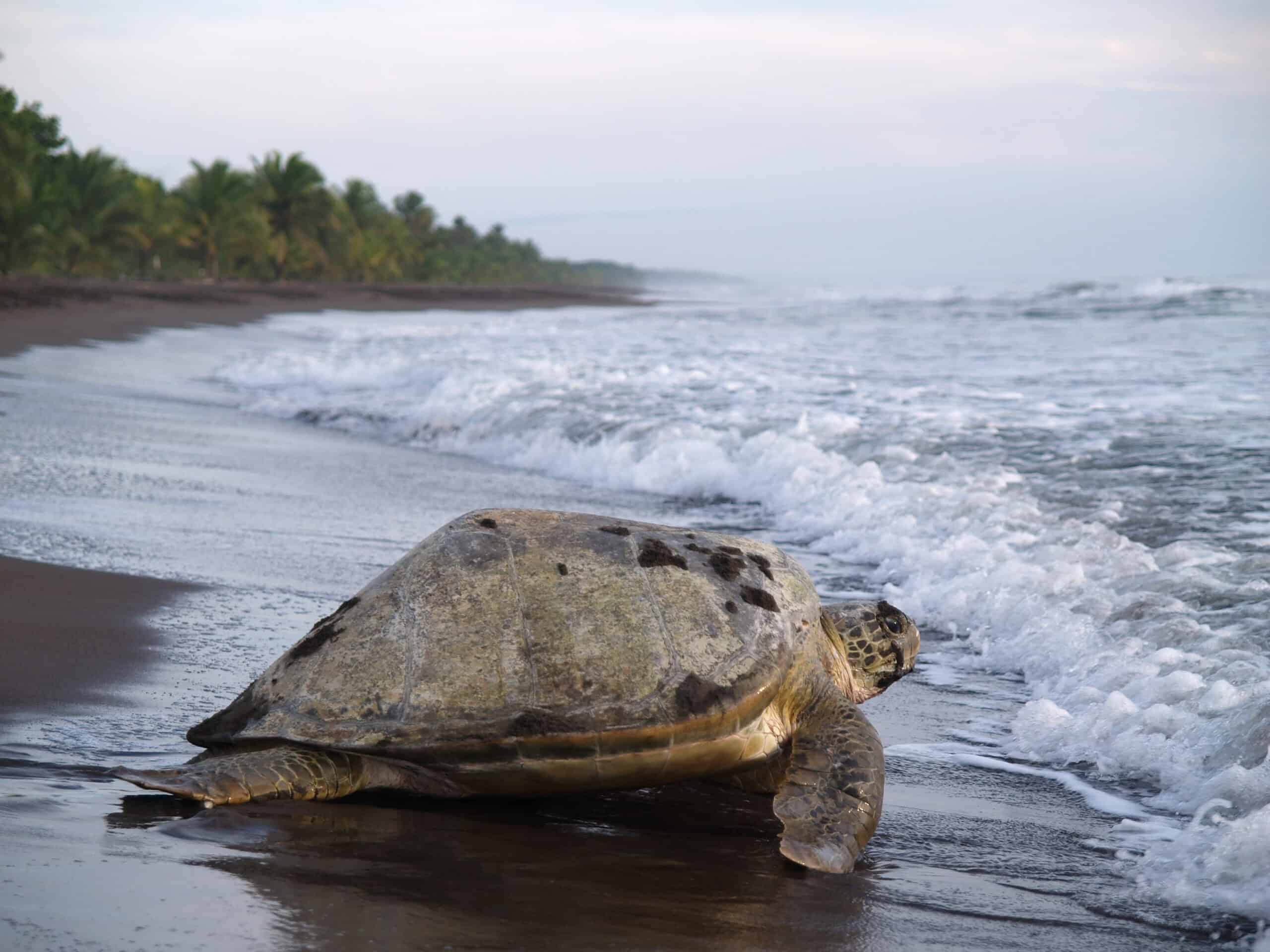
Tortuguero National Park | Caribbean Coast
Best time to Visit: Between July and September
Primary Turtle Species: Green Sea Turtle
Tortuguero, or ‘land of turtles’, is on Costa Rica’s Caribbean coastline. Tortuguero is unique, in that most experiences revolve exclusively around water. It’s known for its large number of green sea turtles, but there’s also some chance of seeing leatherbacks and loggerhead, perhaps even a Hawkesbill if you’re very lucky. Though green turtles nest here from March to October, July to September is usually the optimum period. Some turtles can be spotted during the day, but the vast majority will arrive under the cover of darkness, so it’s best to book yourself onto a night tour.
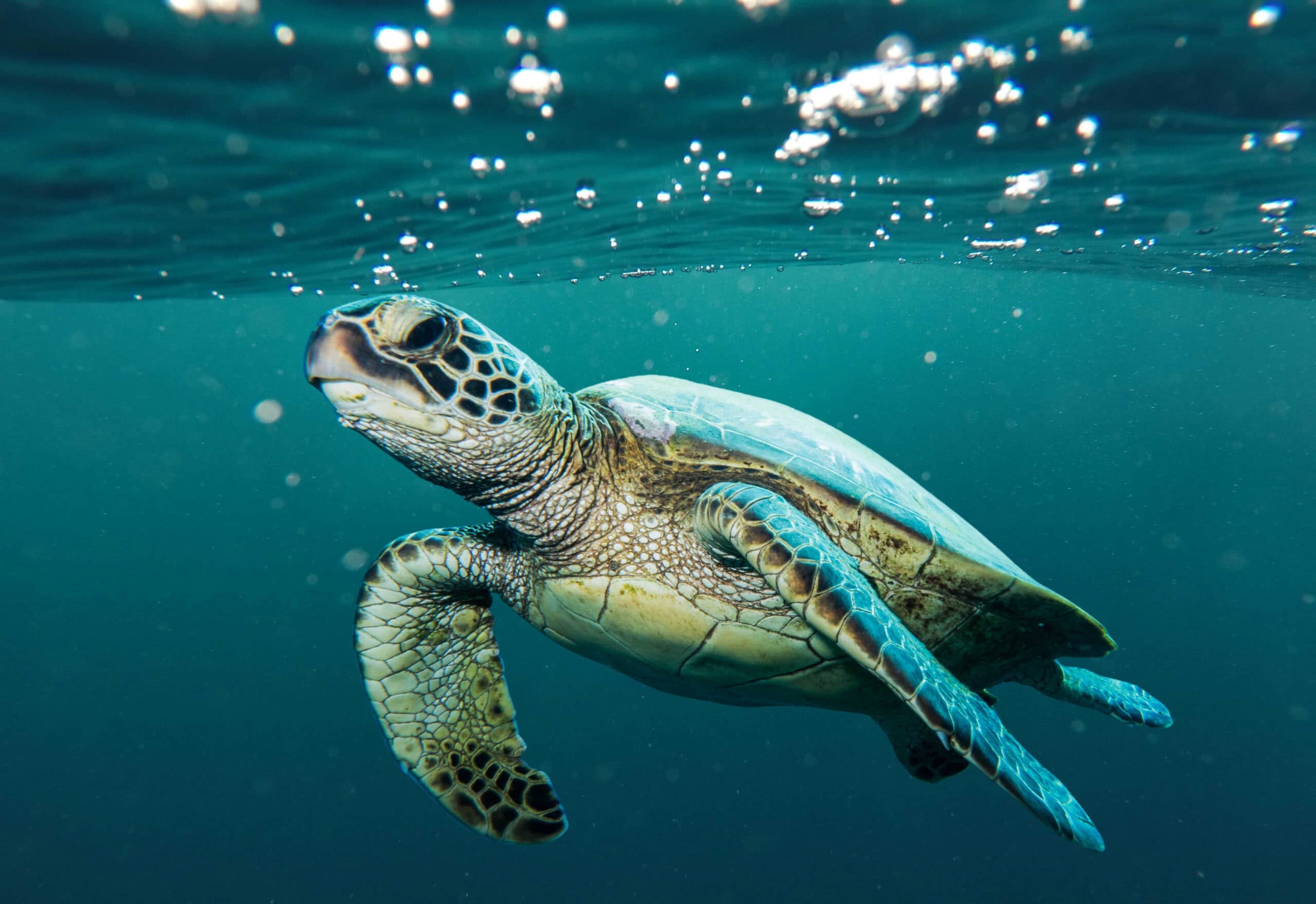
Ostional National Wildlife Refuge | Pacific Coast
Best time to Visit: Between September and October
Primary Turtle Species: Olive Ridley
The 200m stretch of black volcanic sands at Ostional can be found on the Nicoya peninsula, at the western end of Costa Rica’s Pacific coastline. The Pacific coast of Costa Rica supports hundreds of thousands of nesting Olive Ridleys. Most of them arrive at beaches Nancite and Ostional, but we’ll focus on Ostional because it’s a little more accessible (Nacite, in the Santa Rosa National Park, requires a 4×4 and permission from the park ranger).
Those who know their turtles will know that the Olive Ridley have a very unique nesting habit referred to as arribada (exclusive to the Olive Ridley and Kemp Ridley). Females come to shore in their thousands, mostly in unison. It’s thought that they are guided by the lunar cycle. With similar synchronicity, the hatchlings are known to sing to each other, waiting until all of them have cracked out of their eggs before questing off en-mass. This makes their collective odds of survival much greater. The highest recorded number was in 1995, when an estimated 500,000 came to shore (bearing in mind that’s about 200 eggs per nest). Though most people come here for the arribada phenomenon, there is a chance that you will see Green and Leatherback turtles.
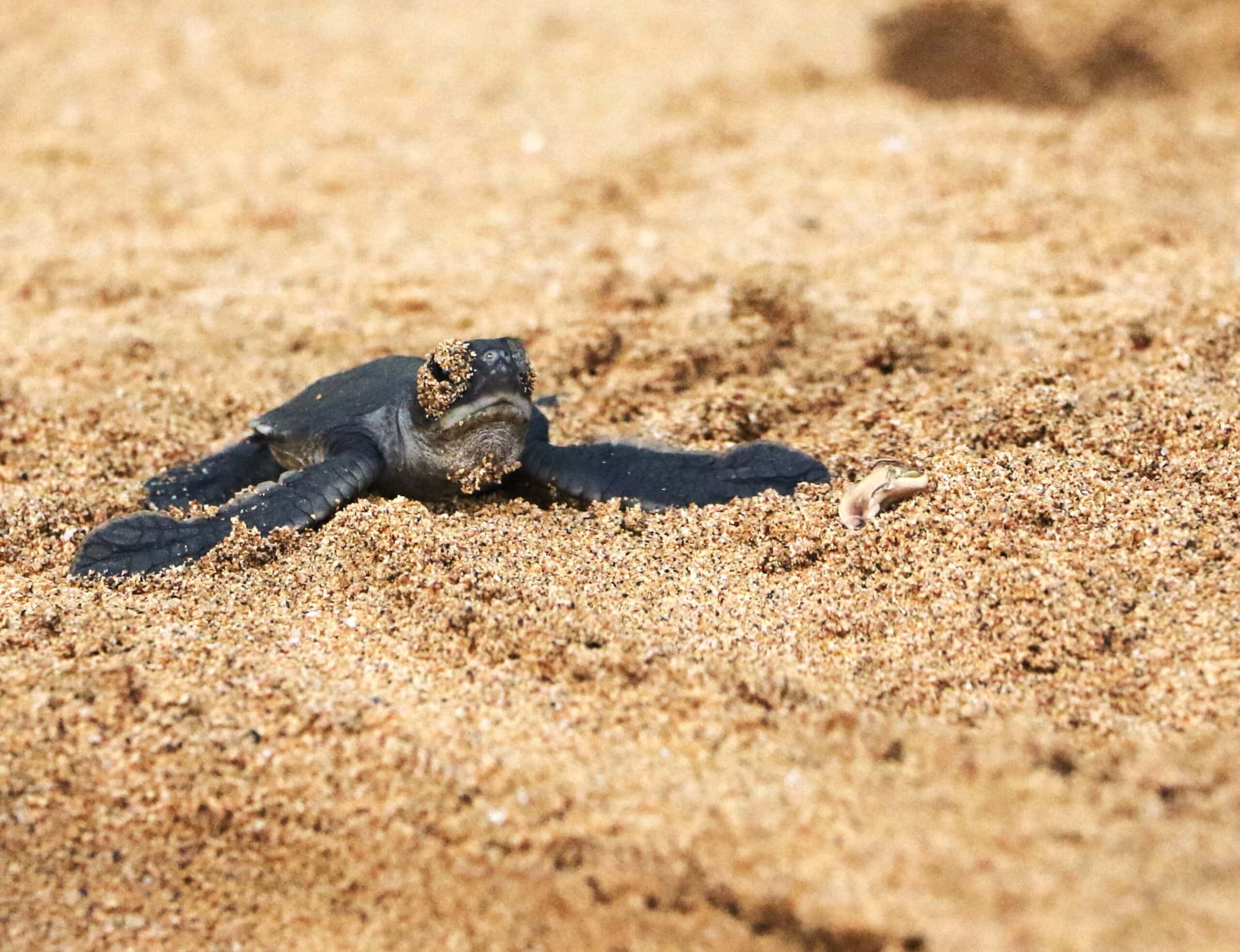
NOTE: If you are a visitor to Ostional Beach, it’s best not to drive there independently because there is a river crossing and this may invalidate your hire car insurance.
Playa Grande in Las Baulas National Marine Park | Pacific coast
Best time to Visit: Between mid-October and mid-February
Primary Turtle Species: Leatherback
Just up from Ostional is the beach of Playa Grande at Las Baulas. It worth noting that there are several ‘playa grande’ in Costa Rica, so you need to locate it in terms of the Marine National Park. This is a key nesting site for Leatherback Turtles between October and February, where guided night tours can be booked locally. This is the most important of all the Leatherback nesting sites and this turtle is certainly the most impressive in stature, with some weighing up to 2000 lbs (142 stone). That’s the equivalent of 11 men weighing 13 stone each! It’s possible you may see Hawksbill turtles here but they are much less common.
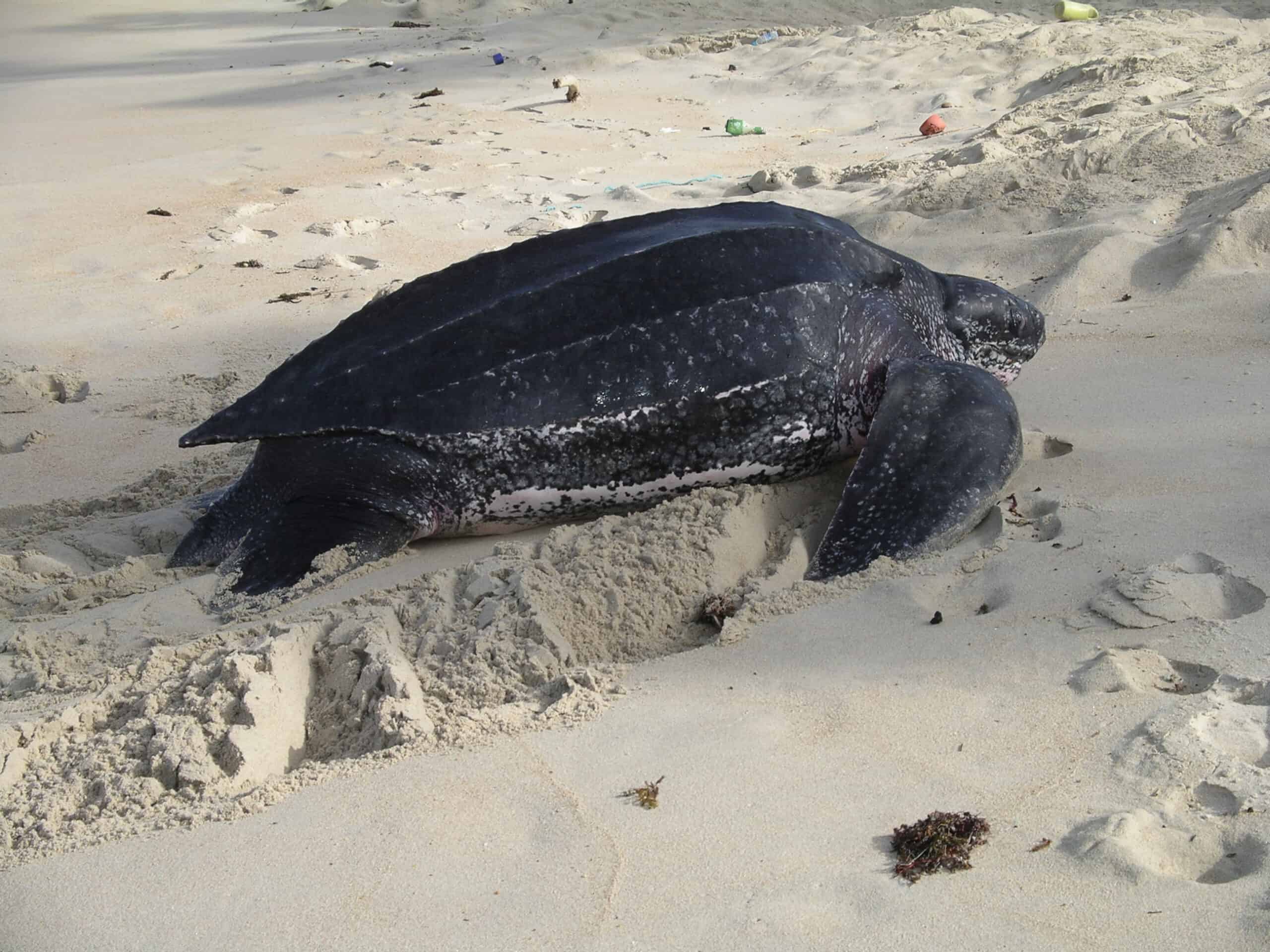
Osu Peninsula | Pacific Coast
Best time to Visit: December through the March is probably peak time for nesting and hatching Pacific Greens. Olive Ridley are year round here but most concentrated between September and December, though tours are general available from July right through to December.
Primary Turtle Species: Olive Ridley and Pacific Green
Corcovado National Park is on the Osu Peninsula . They offer a variety of turtle watching experiences, both in the day and at night. These are educational tours, very much focussed on the conservation of this beautiful animal. Their tours run from October to January. As well as the Olive Ridley and Pacific Green, they also have Hawkesbill. Leatherback, and Green Turtles here.
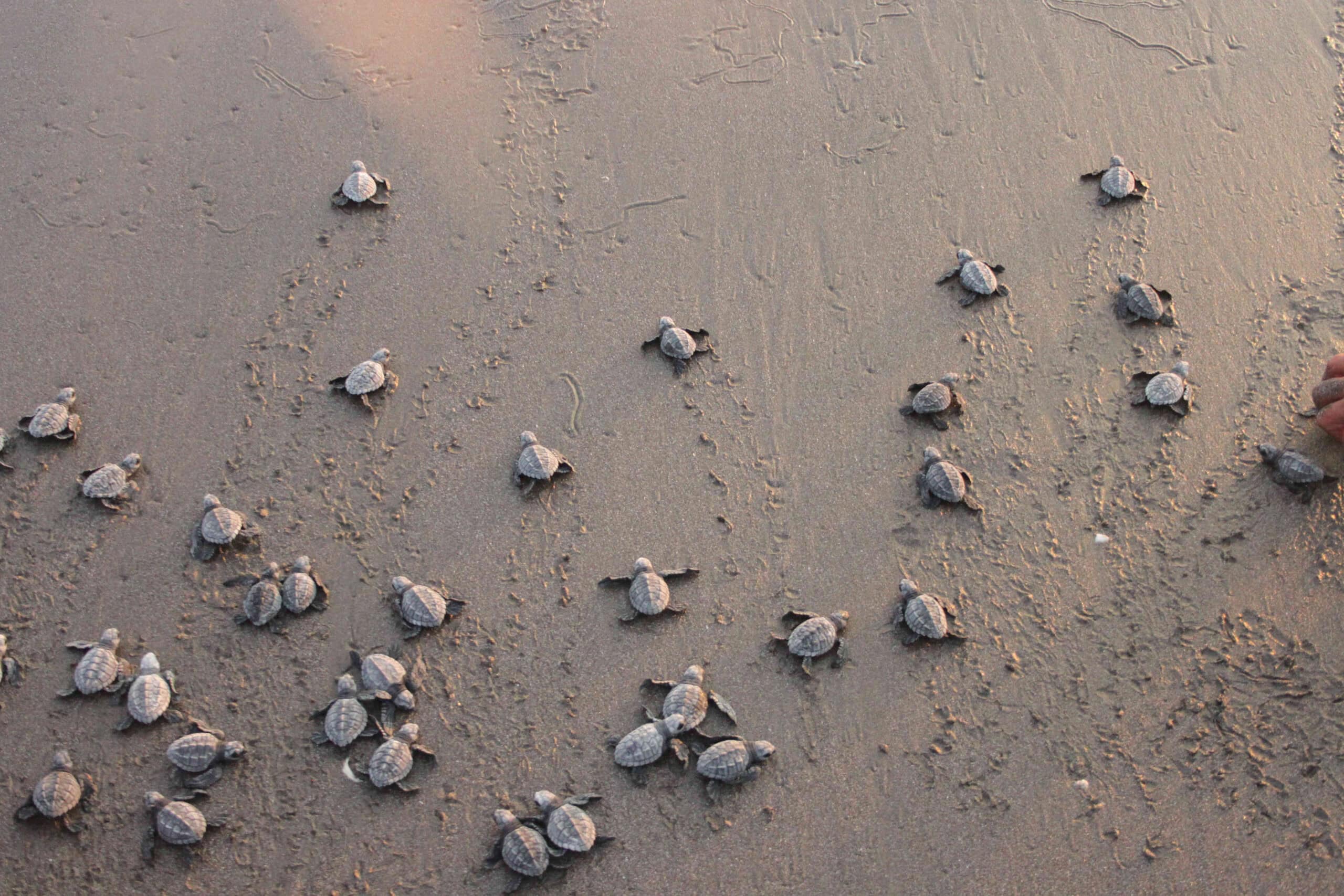
Cano Island (boat excursion and snorkelling) | Pacific Coast
Best time to Visit: Year-round.
Cano Island is a small dot next to the osu peninsula. It’s a biological reserve surrounded by coral, and is rich with marine life. You can take a boat out to the island and go snorkelling or scuba diving. It’s reasonably common to see turtles in the waters surrounding the island, as well as other marine life such as white tipped reef sharks, rays, and an array of tropical fish.
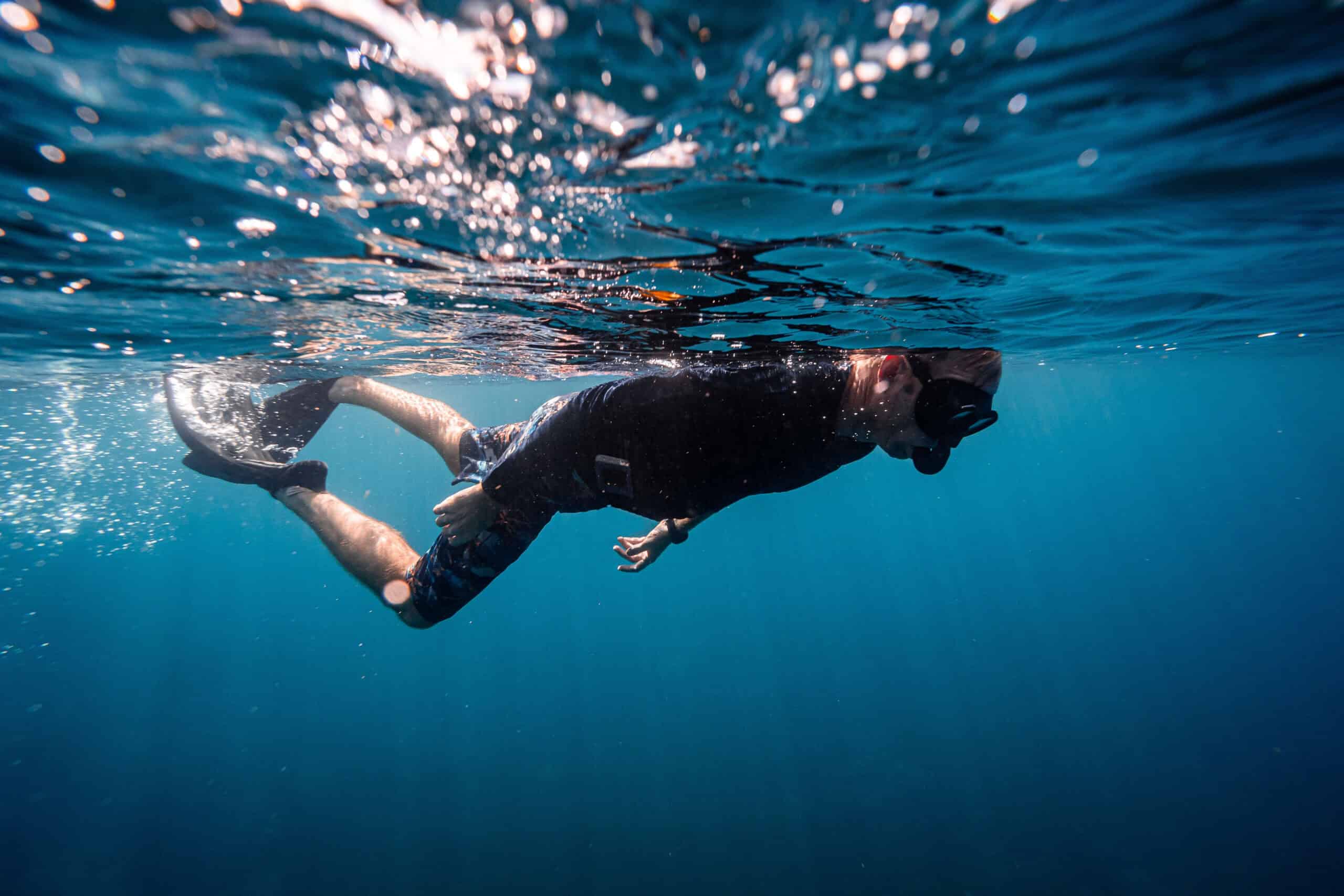
Want to know more about wildlife experiences in Costa Rica?
If you would like to go turtle watching in Costa Rica, get in touch with Max. He can advice you on which National Parks are best, and other fantastic wildlife experiences that you can enjoy.

